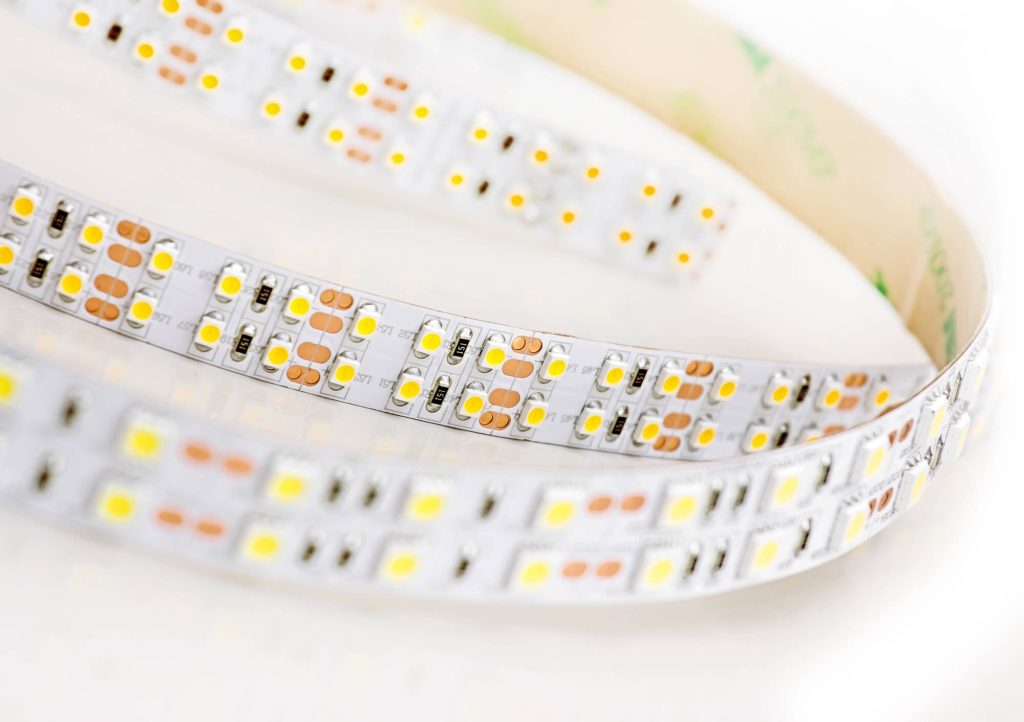Expert’s Advice: Buying LED Strip Lights

Buying LED Strip Lights seems like a simple enough task; however, when many of our customers start diving into the world of LED lighting, they soon discover that there are many options at their disposal, and that can be a little confusing without the proper guidance or information.
In this article, I’ll explain the main differences between LED Strip Light types and what you should look out for depending on your needs.
Note: For a full guide, check out our LED Strip Buyer’s Guide here.
LED Strip Light Buying Tips
Depending on what you need LED Strip Lights for, you should look for different voltages and types, as each one is designed for a large variety of purposes.
Consider the Voltage vs Length
For most purposes, LED Light Strips come in either 12 and 24-volt types. Each one is meant for different applications, and depending on the length you’re planning on running them through, you’ll have to go with one or the other.
Typically, 12-volt LED Strip Lights are meant to be run across lengths of up to 5 metres, whereas their 24-volt counterparts are better for up to 10. If you try to run 12-volt LED Strip Lights through longer distances, you’re likely to experience dim lighting and flickering, along with other issues.
Think About the Angle Beam
While LED Strip Lights are ideal for lighting almost any area, the angle at which they produce light matters and can vary depending on the type you choose. The two main types of LED Strip Lights are SMD (Surface-Mounted-Device), and COB (Chip on board).
Although both types produce bright light and are very flexible in terms of installation and customization, COB LED lights can typically produce a beam angle of 180 degrees, whereas SMDs are limited to 120. This is mainly due to the way each LED Strip Light type is built.
So, if you’re looking for an LED Strip Light that covers a wider angle, COB should be your go-to.
Plan Out the Installation
Installing LED Strips is, for the most part, very simple. Much simpler than installing other lighting solutions. That said, even when that’s the case, I suggest planning out where you’ll be installing your LED Strip Lights, as keeping your wall outlet’s location in mind is key.
You wouldn’t believe how many people happily install their LED Strip Lights where they think they look pretty, only to discover that they’re a few inches short from the outlet or that they must run them through an area they didn’t intend to.
Having a vision is great, but I recommend prioritising the location of the wall outlet over any aesthetic decision. Adjustments are sometimes undesirable, but if they can help your LED Strip Lights have a more natural installation and stay where they’re supposed to, they’re usually worth the effort.
Also, if you’re planning on using your LED Strip Lights outdoors, you can—just make sure that they’re rated for outdoor use and that they are water-resistant.
Mind the Drivers
If you’re serious about LED Strip Lights, then you should probably consider getting an LED Driver. Among many other things, these drivers are ideal for protecting your lights from power surges that can damage them, and they also ensure that there’s no flickering or dimming by maintaining a regulated voltage.
LED Drivers also help make LED Strip Lights more efficient by ensuring they don’t draw more watts than they need, and some can even be integrated with Smart Home systems.
In most cases, it’s ok to place your LED Strip Lights on adjacent walls as long as they tie back to an LED Driver or if each light has its own. For more information on how you can make your LED Light Strips last longer and work better, make sure to review our piece on why you need LED Drivers.
Installation Tips For Connectivity And Motion Sensors
If you want to configure your LED Strip Lights to detect motion and turn on when they do and already bought a model that has that feature, I recommend installing your lights in an unobstructed area, where the sensors can clearly sense what is happening in the room.
The same goes for Wi-Fi connectivity and remote control, as ensuring that there’s nothing between the transmitter and the receiver blocking their communication is key to optimal performance.
Choosing the Right LED Strip Light
There are so many LED Strip Light options available out there, that making a choice can often be difficult. I hope my insights have helped make the task easier and given you the necessary tools to make the right choice whenever you go shopping.
Remember to always keep in mind the length you’ll be running your LED Strip Lights through, the beam angle you’re looking for, and where you’ll be installing them in relation to your wall outlets and LED Drivers.
If you have any questions regarding our products, please do not hesitate to email us at enquiries@ledsave.co.uk, or give us a ring at 01652 638840. We’re open Monday–Friday, 9 a.m.–5 p.m. Please check out our contact page for more information.
Updated: 18-11-2024
